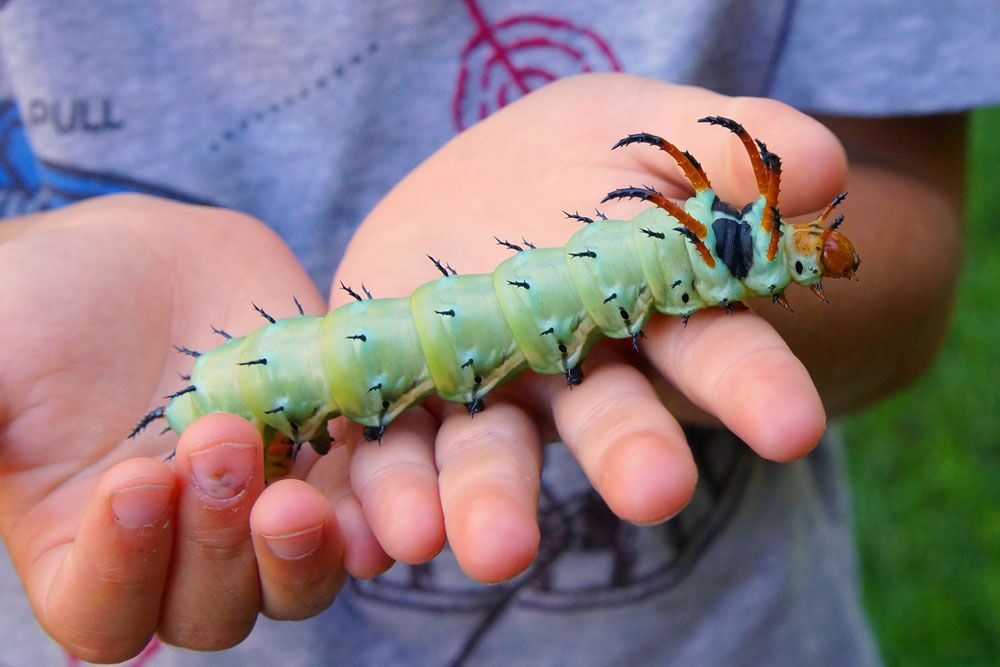
Hickory Horned Devil – Citheronia regalis
Common Name: Hickory Horned Devil
Latin Name: Citheronia regalis
Appearance:
The Hickory Horned Devil is a large, striking caterpillar reaching up to 15 cm long. It has a green body with black spots and numerous black spines that give it a “horned” appearance. When disturbed, it will rear its front end and display its horns to deter predators. The adult form of the Hickory Horned Devil is a large, brownish-gray moth with a wingspan of up to 15 cm.
Egg: The eggs of the Hickory Horned Devil are small and yellow and are laid in clusters on the leaves of host plants.
Pupa: The pupa of the Hickory Horned Devil is large and brown and is formed in a cocoon on the ground.
Larva: The Hickory Horned Devil is the larval form of the Royal Walnut Moth. The larvae are green with black spots and spines and can grow up to 15 cm long.
Adults: The adult Royal Walnut Moth has a wingspan of up to 15 cm and is brownish-gray in color with wavy lines on its wings. It has large, feathery antennae that help it to locate mates.
Host plant:
The Hickory Horned Devil feeds on the leaves of various trees, including hickory, walnut, and sweetgum.
Territory:
The Hickory Horned Devil is found throughout the eastern United States, from Maine to Florida and as far west as Texas.
Damages caused by Hickory Horned Devil:
While the Hickory Horned Devil may eat a lot of foliage, it generally does not cause significant damage to host trees. However, large numbers of larvae can defoliate trees and impact their growth.
Life history and Habits:
The Hickory Horned Devil has a one-year life cycle. The adult Royal Walnut Moth lays its eggs on the leaves of host plants in the summer, and the eggs hatch into the striking larvae known as the Hickory Horned Devil. The larvae feed on the leaves of the host plant for several weeks before dropping to the ground to form a cocoon and pupate. The pupa overwinters, and the adult moth emerges the following summer. The Hickory Horned Devil is well-known for its impressive size and striking appearance and is often sought after by insect enthusiasts.
